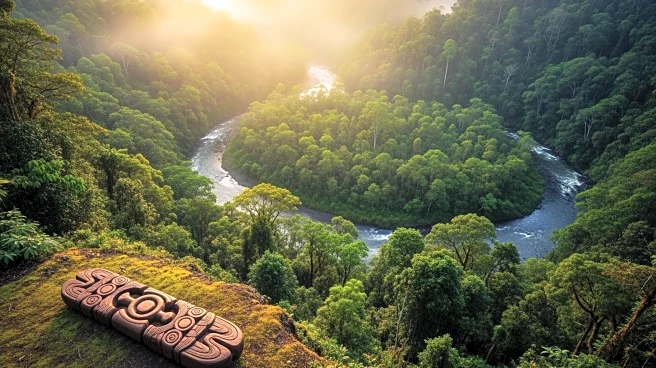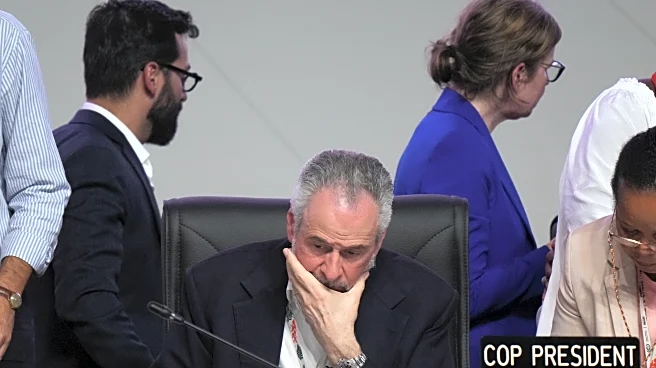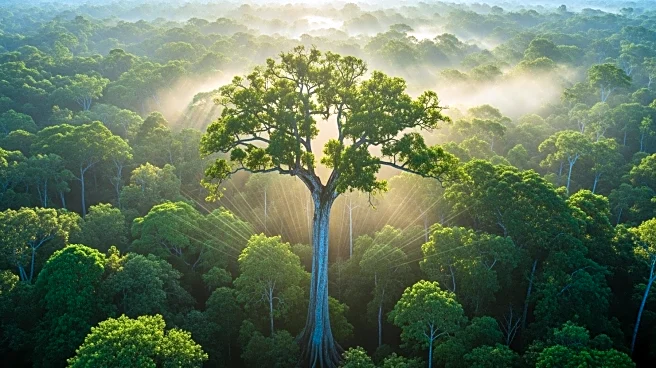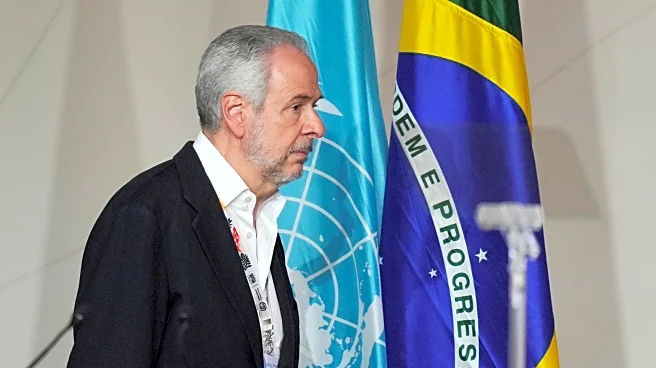What's Happening?
At the COP30 climate summit held in Belém, Brazil officially recognized the original territory of the Kaxuyana tribe, marking a significant milestone in Indigenous land rights. This recognition comes decades
after the tribe was displaced during Brazil's military dictatorship in the 1960s. The acknowledgment of the Kaxuyana's land, a vast area of old-growth rainforest, is the first instance of a COP summit recognizing Indigenous land rights and forest management as crucial climate mitigation strategies. The summit saw unprecedented visibility for Indigenous peoples, with over 3,000 Indigenous attendees and multiple protests advocating for their rights. Despite some criticisms regarding the exclusion from formal negotiations, the summit concluded with a $1.8 billion pledge to support land rights and conservation projects across Latin America, Africa, and Asia.
Why It's Important?
The recognition of Indigenous land rights at COP30 is a pivotal moment for climate policy, highlighting the role of Indigenous stewardship in conserving biodiversity and maintaining carbon sinks. This acknowledgment could lead to more robust climate strategies that integrate Indigenous knowledge and practices, potentially influencing global climate policies. The financial pledge of $1.8 billion aims to empower Indigenous communities by directly supporting their conservation efforts, which could enhance local governance and sustainable forest management. However, the inclusion of Indigenous peoples with 'local communities' in legal terms raises concerns about potential loopholes that could undermine land rights. The outcome of COP30 may set a precedent for future climate negotiations, emphasizing the importance of Indigenous participation in global environmental governance.
What's Next?
Following COP30, the implementation of the $1.8 billion pledge will be crucial in supporting Indigenous land rights and conservation projects. The funds are intended to be directly allocated to Indigenous organizations, bypassing intermediaries, which could strengthen local institutions and promote sustainable practices. The recognition of the Kaxuyana territory may inspire other Indigenous groups to seek similar acknowledgments, potentially leading to broader changes in land rights policies. As the global community increasingly acknowledges the effectiveness of Indigenous-managed territories, future climate summits may further integrate Indigenous voices and perspectives into formal negotiations, potentially reshaping international climate policies.
Beyond the Headlines
The recognition of Indigenous land rights at COP30 not only addresses historical injustices but also highlights the ethical dimensions of climate policy. By acknowledging the role of Indigenous peoples in environmental stewardship, the summit underscores the importance of cultural preservation and the protection of traditional knowledge. This development may encourage a shift towards more inclusive and equitable climate strategies that respect Indigenous sovereignty and promote social justice. Additionally, the focus on direct financing for Indigenous projects could lead to long-term shifts in how conservation efforts are funded and managed, fostering greater autonomy and resilience among Indigenous communities.












